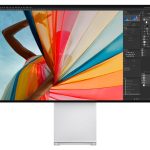
Intel Core i9-13900K will be the flagship chip of the 13th Gen Raptor Lake Desktop CPU family that will feature support on the LGA 1700/1800 socket platform. Just like its predecessor, Alder Lake, the Raptor Lake chip will adopt a similar hybrid architecture design, composed of P-cores and E-cores but with more cores, higher clocks, and a larger cache for faster performance.
Intel Core i9-13900K CPU: The 13th Gen Raptor Lake Desktop Flagship With 24 Cores & Over 5.5 GHz Clock Speeds
[Updated- 02/07/22]
While we have already detailed what Intel’s 13th Gen Raptor Lake and Z790 platform brings to the table over here, I believe that the fastest chip in the lineup deserves its own roundup. Intel’s Raptor Lake isn’t a massive architectural upgrade but a refinement of the existing Alder Lake design that’ll entice gamers and content creators with more of virtually everything. The Core i9-13900K being the flagship of this lineup will have to prove that it’s the real deal by not only showcasing a decent CPU performance gain over the Core i9-12900K but also against AMD’s Ryzen 7000 flagship chip based on the Zen 4 core.
Intel 13th Gen Raptor Lake Desktop CPUs Expected Features:
- Up To 24 Cores & 32 Threads
- Brand New Raptor Cove CPU Cores (Higher P-Core IPC)
- Based on 10nm ESF ‘Intel 7’ process node
- Supported on existing LGA 1700 motherboards
- Dual-Channel DDR5-5600 Memory Support
- 20 PCIe Gen 5 Lanes
- Enhanced Overclocking Features
- 125W PL1 TDP (Flagship SKUs)
Intel hasn’t officially confirmed the Core i9-13900K CPU part yet but there are multiple leaks that confirm its existence and also the fact that the chip will get an even faster ‘Special Edition’ variant with even higher clock speeds. So with that said, let’s get on with the specifications.
Intel Raptor Lake vs AMD Raphael Desktop CPUs Comparison ‘Expected’
| CPU Family | AMD Raphael (RPL-X) | Intel Raptor Lake (RPL-S) |
|---|---|---|
| Process Node | TSMC 5nm | Intel 7 |
| Architecture | Zen 4 (Chiplet) | Raptor Cove (P-Core) Gracemont (E-Core) |
| Cores / Threads | Up To 16/32 | Up To 24/32 |
| Total L3 Cache | 64 MB (+3D V-Cache) | 36 MB |
| Total L2 Cache | 16 MB | 32 MB |
| Total Cache | 80 MB | 68 MB |
| Max Clocks (1T) | ~5.8 GHz | ~5.8 GHz |
| Memory Support | DDR5 | DDR5/DDR4 |
| Memory Channels | 2 Channel (2DPC) | 2 Channel (2DPC) |
| Memory Speeds | DDR5-5600 | DDR5-5600 DDR4-3200 |
| Platform Support | 600-Series (X670E/X670/B650/A620) | 600-Series (Z690/H670/B650/H610) 700-Series (Z790/H770/B760) |
| PCIe Gen 5.0 | Both GPU & M.2 (Extreme chipsets only) | Both GPU & M.2 (700-Series only) |
| Integrated Graphics | AMD RDNA 2 | Intel Iris Xe |
| Socket | AM5 (LGA 1718) | LGA 1700/1800 |
| TDP (Max) | 170W (TDP) 230W (PPT) |
125W (PL1) 240W+ (PL2) |
| Launch | 2H 2022 | 2H 2022 |
Intel Core i9-13900K ‘Raptor Lake’ CPU Specifications
In terms of specifications, the Intel Core i9-13900K CPU will offer a total of 24 cores and 32 threads. These are divided into an 8+16 configuration which includes 8 P-Cores based on the Raptor Cove and 16 E-Cores based on the Gracemont core architecture. All of these cores are fabricated on the 10nm ESF or ‘Intel 7’ process node. Given that the chip will feature more cores and cache using the same process node, the overall die size would be a bit bigger than Alder Lake’s C0 desktop die.
As for cache, the Intel Core i9-13900 Raptor Lake CPU carries 16 MB of L2 cache for the P-Cores (2 MB per core) and 16 MB of L2 cache for the E-cores too (4MB per cluster of 4 cores). This gives us a total of 32 MB of L2 cache which combined with the L3 cache will offer us a total of 68 MB of cache which is rumored to be labeled as ‘Game Cache’.
The exact clock speeds are not known at the moment but we have seen samples ranging from 4.0 (ES1) to 5.5 GHz (ES3). The current rumors expect the single-core clocks to max out at 5.8 GHz for the final retail part while the all-core boost is expected to peak out at 5.4-5.5 GHz. The CPU will feature a based TDP of 125W (PL1) and a PL2 TDP (or MTP – Maximum Turbo Power) of around 250W. The actual figure is said to be around 253W at max which will be 12W higher than the Core i9-12900KS.
Just like Alder Lake, the Intel Raptor Lake CPUs including the Core i9-13900K won’t feature any AVX-512 support since that has been removed from the current and future mainstream processors. The CPU will also offer improved DDR5 memory support while retaining DDR4 support too. The DDR5 memory will be natively supported with speeds of up to 5600 MT/s and one can expect over 8000 MT/s speeds once Raptor Lake comes to the market.
On the other hand, the CPU will get some enhanced overclocking features such as the following:
- Added per-core OC TVB support
- Added package OC TVB support
- Added Efficient TVB support
Recently, OneRaichu, who has been ahead of the curve in hunting down Intel CPU rumors, pointed out that 13th Gen Raptor Lake CPUs may include one SKU which can feature a turbo clock speed of up to 6 GHz, the Intel Core i9-13900KS. This would make Raptor Lake the first x86 CPU family to offer a clock frequency that’s going to breach the 6 GHz barrier. Knowing that AMD is going all-out with their own Zen 4-powered Ryzen 7000 chips in the clock department with 5.5 GHz+ being achieved across several threads and rumors of 5.6-5.8 GHz single-core clocks in the air, it looks like Intel will just unleash everything it is capable of with Raptor Lake.
Intel Core i9-13900KS CPU Specifications ‘Preliminary’:
| CPU Name | Intel Core i9-13900KS | Intel Core i9-13900K | Intel Core i9-12900KS | Intel Core i9-12900K |
|---|---|---|---|---|
| Process Node | 10nm ESF ‘Intel 7’ | 10nm ESF ‘Intel 7’ | 10nm ESF ‘Intel 7’ | 10nm ESF ‘Intel 7’ |
| P-Core Architecture | Raptor Cove | Raptor Cove | Golden Cove | Golden Cove |
| E-Core Architecture | Gracemont | Gracemont | Gracemont | Gracemont |
| Hybrid Configuration | 8+16 | 8+16 | 8+8 | 8+8 |
| Cores / Threads (Max) | 24/32 | 24/32 | 16/24 | 16/24 |
| Base Clock | TBD | TBD | 3.4 GHz | 3.2 GHz |
| One-Core Boost | ~6.0 GHz | ~5.8 GHz | 5.5 GHz | 5.2 GHz |
| All-Core Boost | ~5.6 GHz | ~5.4 GHz | 5.2 GHz | 5.0 GHz |
| Memory Support (Native) | DDR5-5600 | DDR5-5600 | DDR5-4800 | DDR5-4800 |
| L2 Cache | 32 MB | 32 MB | 14 MB | 14 MB |
| L3 Cache | 36 MB | 36 MB | 30 MB | 30 MB |
| TDP (PL1) | 150W | 125W | 150W | 125W |
| TDP (PL2) | 253W | 253W | 241W | 241W |
| Price (MSRP) | ~$750 US | ~$599 US | $739 US | $589 US |
| Launch | 2H 2022 | 2H 2022 | 2H 2021 | 2H 2021 |
Intel Core i9-13900K ‘Raptor Lake’ CPU Performance
Coming to the performance section, Intel has officially stated that the Raptor Lake CPUs bring up to a double-digit performance boost. They haven’t stated if this is single-core or multi-core but based on recent leaks, we can tell that the performance bump mostly comes in the multi-threaded section thanks to the increased core count but single-core performance also gets a decent bump thanks to the increased clocks and cache.
Intel’s Core i9-13900K Raptor Lake ES1 CPU is mostly on par with the Intel Core i9-12900K with a 4.0 GHz clock speed but the ES3 CPU ends up 7% faster in single and 28% faster in multi-thread tests. It also delivers a 34% higher single-threaded and 21% higher multi-threaded performance versus the AMD Ryzen 9 5950X. Now AMD is expected to gain an additional >15% single-threaded IPC uplift and an overall >35% multi-threaded uplift which comes through a combination of architectural & clock improvements, gen-over-gen with Zen 4 Ryzen 7000 CPUs so it will be a really close battle in between the two flagships.
In terms of gaming performance, the Intel Core i9-13900K CPU has been said to be the better chip when it comes to running games. We have been told that the CPU will reclaim the gaming crown from AMD’s Ryzen 7 5800X3D for a short amount of time before AMD fires back with its 3D V-Cache lineup which is expected to debut this year too.
Intel Core i9-13900K ‘Raptor Lake’ Price & Availability
Intel’s pricing strategy starting its 12th Gen Alder Lake lineup has been very aggressive and that has definitely helped them sell enough units to start making a dent in AMD’s Ryzen market share & its revenue. Segments such as the Core i5 and Core i7 are showing up in the ‘Top 10 Sellers’ on several NA & EU-based retailers but the top Core i9 parts are what enthusiasts settle for.
It is likely that Intel will retain the prices of its chips moving forward. Intel only bumped the pricing up by $50 US when they doubled the core counts from 8 on Core i9-11900K ($539 US SEP) to 16 on the Core i9-12900K ($589 US SEP). Since Raptor Lake isn’t a doubling and is mostly a refinement of Alder Lake, we can expect the pricing to remain the same and at most, hit the $599 US mark. AMD’s flagship is likely to cost around $700-$800 US which means that Intel may have a big edge in price to performance segment.
As for launch and availability, the Intel 13th Gen Raptor Lake Desktop CPUs are expected to launch alongside the 700-series chipset family in the second half of 2022. The launch has been rumored for Q4 2022 which means that we could at the earliest see these chips in action by September or October which would also be just in time for the next-gen AMD Ryzen 7000 CPUs. Both AMD & Intel will be pushing their flagship CPUs on their respective flagship platforms so we can’t wait to see the final battle in a few months.
The post Intel Core i9-13900K, The 13th Gen Raptor Lake Flagship CPU, Specs, Price, Performance & Availability – Everything We Know So Far by Hassan Mujtaba appeared first on Wccftech.
Powered by WPeMatico









